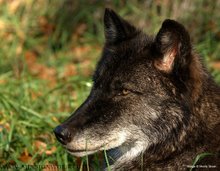From The BBC:
Gigantic fossil rodent discovered
The fossilised skull of the largest rodent ever recorded has been described by scientists for the first time.
The remains of the one-tonne beast, found in Uruguay, indicate that it would have been as big as a bull.
It is thought that the three-metre-long herbivore would have roamed estuaries and forests 2-4 million years ago.
The mammal, which is more than 15 times heavier than the largest living rodent, is described in the journal Proceedings of the Royal Society B.
The authors say the animal would have lived alongside carnivorous "terror birds" and sabre-toothed cats.
"If you are a rodent you cannot run so well so you would have had to fight with these predators," said Dr Rudemar Ernesto Blanco of the Institute of Physics in Montevideo, Uruguay, one of the authors of the paper.
"It might have reached this size to protect itself."
Fighting giants
The half-metre-long fossil skull was discovered by an amateur palaeontologist in a boulder on the Rio de La Plata coast in the south of the country.
The remains had lain in the Museum of Natural History in Montevideo for three years before being studied and identified as a new species, Josephoartigasia monesi.
It was recognised as a new creature by examining and comparing its teeth with other known species of Josephoartigasia.
"Its incisors are extraordinarily large - much larger than any other rodent," said Dr Blanco.
The researchers have speculated that the creature may have used the teeth to cut wood in a similar way to a modern day beaver.
"The other possibility is that they used them for fighting."
The team spent nearly one year estimating the body mass by comparing the skull with other living South American rodents.
Most weigh less than 1kg. However, there are exceptions such as the 60kg capybara (Hydrochoerus hydrochaeris), and the closest living relative of the newly discovered creature: the pakarana (Dinomys branickii).
The comparisons allowed them to estimate the creature's weight at nearly one tonne (1,000kg) and predict its length.
"We think it was around three metres from the tip of the nose to the tail," said Dr Blanco.
The creature's tail would have been little more than a stump, according to the team.
Island paradise
The skull is not the first oversized creature to be discovered in South America.
Other finds have included car-sized armadillos, giant ground sloths and hook-beaked terror birds.
The previously largest-known rodent was Phoberomys pattersoni, a 700kg creature nicknamed "guinea-zilla" and discovered in Venezuela.
South America is well studied by biologists because its plants and animals developed in isolation to the rest of the world's flora and fauna.
Until the emergence of the isthmus of Panama, connecting it to Central and North America about three million years ago, the landmass had been cut off for tens of millions of years.
"It is highly probable that we can find more material of this fossil and other related species," said Dr Blanco.
---------------------------------------------
Giant rats!
Car-sized armadillos!
Terror birds!
How cool is that? Now all we need is King Kong.
Subscribe to:
Post Comments (Atom)

No comments:
Post a Comment